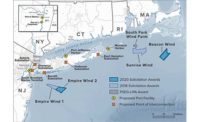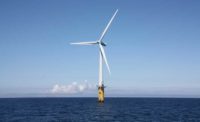East Industry News: NY Initiative Funds Clean Energy Apprenticeships

A Rochester, N.Y., apprentice program is developing a diverse pipeline of workers to meet the clean energy sector’s projected workforce needs.
Photo by Robert Smith, courtesy Multi-Craft Apprenticeship Preparation Program (MAPP) Rochester
State funding program “reflects the strategic thinking of labor organizations as they work to meet the demand ... for skilled workers focusing on energy efficiency and building technologies.”
—Doreen Harris, CEO, NYSERDA
New York state is providing $45 million to fund apprenticeships and pre-apprenticeships for clean energy construction in an effort to build a pipeline of skilled workers to meet the sector’s projected employment needs.
The effort is a partnership between the New York State Energy Research Development Authority and the Finishing Trades Institute of New York, a unit of the union of painters and allied trades. Agency CEO Doreen Harris said the state needs skilled workers in areas that include renewable power generation, building electrification, supply chain manufacturing and clean transportation. Clean energy jobs across New York totaled 178,000 in 2023, up 7.9% from 2022, according to state data from the latest annual report.
The partnership will address workforce needs and provide “opportunities that strengthen our communities,” says Joseph Azzopardi, business manager and secretary treasurer of the union’s district council in New York City. The institute also is partnering with its peer for western and central New York to recruit and train apprentices and journey workers in building envelope technologies. It is also developing a K-12 career awareness program for up to 2,000 students and 200 teachers. The developer of what is aimed to be a scaled-up 400-MW nuclear fusion power plant described as the world’s largest is scurrying to secure construction permits and added funding after announcing plans in late December to build the facility in Chesterfield County, Va., on a 100-acre site leased by state utility giant Dominion Energy. Fusion tech start-up firm Commonwealth Fusion Systems said its ARC plant, set to operate by the early 2030s, would begin development next year. It also has a smaller pilot plant being developed in Massachusetts.
Six New England states have become the first in the U.S. to collectively and proactively launch a longer range push for new power transmission projects to relieve critical regional capacity gaps—asking grid operator ISO New England to seek bids to expand two grid interfaces in southern Maine and to develop new infrastructure.
The New England States Committee on Electricity sent the request to the operator, aiming to have the projects built by 2035 but providing minimum scope to developers, who would by chosen by the committee and ISO New England. The work could include additional upgrades.



